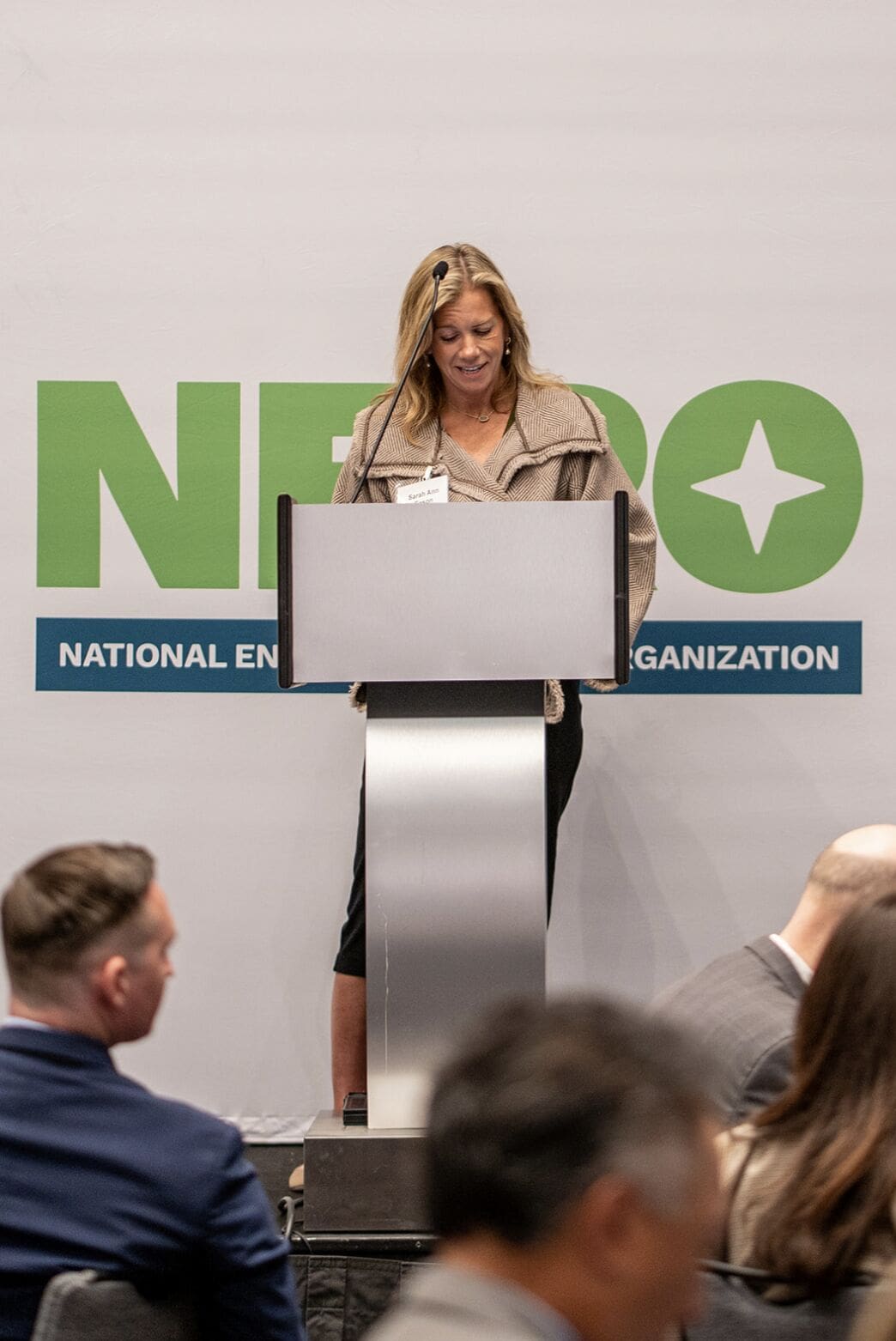Welcome to the October edition of A Capitol View!
The federal government remains shuttered as the two parties are deadlocked on spending differences for the fiscal year that began October 1. The Senate has failed repeatedly to garner the 60 votes needed to pass a temporary spending measure approved by the House and there appears to be no end in sight.
The shutdown adds to the uncertainty for federal spending and programs, with the Trump administration also seeking to take advantage of the freeze to lay off thousands of additional federal workers.
SMI is engaged with clients, agencies, and congressional offices to sharpen our advocacy strategies and ensure that priority programs get funded, are protected, or will be restructured effectively and aligned with our strategic goals.
Forward movement: There is a bit more movement on defense spending, as SMI VP Maria Bowie explains.
“The dynamics for defense are notably different this time thanks to a new stream of mandatory funding available to the Pentagon,” she said.
That comes from the One Big Beautiful Bill passed over the summer that appropriated some $150 billion in additional defense spending.
But the administration has yet to submit its detailed plan for allocating the reconciliation money, which was due to Congress in August. Without such a roadmap, lawmakers lack the critical information needed to align appropriations with actual defense priorities and funding realities.
How it plays out will likely further complicate the appropriations process for Fiscal Year 2026, if and when Congress gets back to the business of finalizing government funding bills.
“The House advanced funding for defense which was broadly aligned with the Trump Administration,” Bowie explained, “while the Senate produced bipartisan texts at or above Fiscal Year 2025 levels. That leaves nearly a $20 billion gulf in defense accounts alone.”
NDAA watch: The National Defense Authorization Act is advancing. The House and Senate have passed their versions. While progress is clear, final passage awaits resolution of funding differences between the chambers and the broader government shutdown.
“NDAA is inching ahead, but final deliberations will be heavily shaped by the uncertainty over appropriations,” Bowie said. “Without clarity on defense toplines and the Pentagon’s reconciliation implementation plan, lawmakers risk drafting an authorization that’s mismatched with eventual funding realities.”
Acquisition reform: We’re also closely monitoring how the two chambers ultimately handle a series of reform proposals for weapons research and purchases as part of the NDAA deliberations.
The House passed the Streamlining Procurement for Effective Execution and Delivery, or SPEED Act, while the Senate has backed the Fostering Reform and Government Efficiency in Defense, or FoRGED Act. It remains unclear which specific reforms will make the cut in a final NDAA.
Read up: Government Shutdowns: Causes and Effects
And: Federal Government Shutdown: What It Means for States and Programs
More shutdown news: Here’s Why the Pentagon Says It Can Pay Troops with Money Intended for Research
ENERGY
 AXE WIELDING: The Department of Energy is initiating additional cuts to grant programs, to the tune of $7.5 billion.
AXE WIELDING: The Department of Energy is initiating additional cuts to grant programs, to the tune of $7.5 billion.
The 321 financial awards supporting 223 projects that were terminated are overseen by the Offices of Clean Energy Demonstrations, Energy Efficiency and Renewable Energy, Grid Deployment, Manufacturing and Energy Supply Chains, Advanced Research Projects Agency-Energy, and Fossil Energy.
“DOE evaluated each of these awards and determined that they did not meet the economic, national security or energy security standards necessary to justify continued investment,” said Energy Secretary Christopher Wright.
POLITICO Pro also reported that more grants, including for battery related materials, have also been terminated. “The cancellations, which DOE did not publicly announce, indicate the clampdown on projects backed by the previous administration may be broadening,” the publication said.
Plus: U.S. Energy Prices Could Rise as Trump Ends $8 Billion in DOE Grants, Senator Warns
‘Give it a shot’: However, several Republican senators from Pennsylvania, West Virginia, and Ohio urged Wright in a letter not to cut planned hydrogen hubs.
“[Hydrogen] is a new technology that will probably never take off unless there is some form of government involvement,” Sen. John Husted told POLITICO. “And while it may not pan out, there are a lot of people who put a lot of effort to get it to this point in time, to give it a shot. It’s worth determining whether this technology has a marketable future.”
Staff cuts: The administration is also going after more staff at DOE, including at offices that oversee solar, wind, and hydrogen, telling them that they may be reassigned, fired, or transferred.
And the National Nuclear Security Administration also told Congress that due to the shutdown it is furloughing 1,400 workers.
“These are not employees that you want to go home,” House Armed Services Committee Chairman Mike Rogers (R-AL) said at a Friday press conference.
More: DOE blames ‘war on American energy’ for staff cuts
DEFENSE
 VISION TO REALITY: SMI is proud to support Govini, the leading defense software company that is redefining with AI and other cutting-edge tools how the Department of War builds and maintains more resilient supply chains for weapons and more.
VISION TO REALITY: SMI is proud to support Govini, the leading defense software company that is redefining with AI and other cutting-edge tools how the Department of War builds and maintains more resilient supply chains for weapons and more.
The Silicon Valley company founded in 2011 achieved a major milestone this month when it surpassed annual recurring revenue of $100 million, tipping the company’s valuation over $1 billion.
‘Entire new category’: “I founded Govini to create an entirely new category of software built to transform how the U.S. government uses AI and data to make decisions,” said Govini Founder and Executive Chairman Eric Gillespie. “After methodically developing our proprietary technology, that vision is now a reality.”
As Defense One reported, Govini has landed contracts for its Ark.ai platform with a number of entities across the Defense Department, including the Army and Navy, and a nearly billion-dollar government-wide software contract.
‘From Factory to Fight’: One novel capability is the ability to use the Govini data platform to track ammunition as it is used to create up-to-date forecasts of ongoing demand for ammunition, according to CEO Tara Murphy Dougherty. Ark.ai is also being leveraged by Navy Fleet Readiness Centers to track parts for ship maintenance, including identifying suppliers that might be at financial risk.
Read more Defense Tech Unicorn Govini Surpasses $100 Million ARR Milestone
Go deeper: From Factory to Fight: A Modern Framework for Defense Logistics
STRATEGIC COMMUNICATIONS
 HEAVY METAL: SMI VPs Carla Zeppieri and Dr. Aisha Haynes will present at the Metals Powder Industry Foundation’s PM Management Summit later this month in Chattanooga, Tennessee, on the theme “From Materials to Competitive Advantage: Navigating the Federal Landscape and Demand Signals.”
HEAVY METAL: SMI VPs Carla Zeppieri and Dr. Aisha Haynes will present at the Metals Powder Industry Foundation’s PM Management Summit later this month in Chattanooga, Tennessee, on the theme “From Materials to Competitive Advantage: Navigating the Federal Landscape and Demand Signals.”
‘Uniquely positioned’: “Recent events have reshaped the global landscape for materials, creating both challenges and opportunities for U.S. industry,” Zeppieri and Haynes, former emerging technology and industrial base leaders at the Defense Department, contend. “Powder metallurgy and particulate materials are uniquely positioned to enable breakthroughs in energy advanced manufacturing, and national security applications.”
Their briefing and a subsequent panel “will highlight pathways for innovation and government engagement to help executives navigate and capitalize on emerging opportunities.”
FUTURE TENSE: SMI VP Jeffrey Leahey also participated in a breakfast hosted by the nonpartisan Natural Energy Resources Organization with Rep. Brett Guthrie of Kentucky, chair of the House Energy and Commerce Committee.
Leahey, who serves as a NERO board member, kicked off the conversation on the future of energy resources, policy, and innovation.
NERO is the primary networking organization for energy interests in Washington.
RESEARCH
 FUTURE TECH: The White House Office of Management and Budget recently released the Trump administration’s R&D budget priorities for Fiscal Year 2027, providing a detailed preview of where it wants to focus longer term investments.
FUTURE TECH: The White House Office of Management and Budget recently released the Trump administration’s R&D budget priorities for Fiscal Year 2027, providing a detailed preview of where it wants to focus longer term investments.
It gives top billing to AI, Quantum Computing, semiconductors and microelectronics, advanced communications networks, advanced manufacturing, and polar region research. It also places a premium on key military capabilities, biotechnology, and building a strong science and technology workforce.
HOLDING PATTERN: The Small Business Innovation Research (SBIR) and Small Business Technology Transfer programs (STTR), the most successful investments in small business innovation utilized by nearly a dozen federal agencies, also lapsed on October 1 after the Senate failed to follow the House and pass a clean one-year reauthorization.
“We are disappointed that the Senate failed to extend the SBIR and STTR programs,” House Small Business Committee Chair Roger Williams and Ranking Member Nydia M. Velázquez (D-NY) and House Science, Space, and Technology Committee Chair Brian Babin (R-TX) and Ranking Member Zoe Lofgren (D-CA) said in a joint statement.
“The House came together across party lines to pass a one-year extension that would provide certainty to Main Street while Congress worked toward a strong, long-term reauthorization,” they added. “Without it, research could be delayed, innovation diminished, and America’s competitive edge on the world stage eroded.”
While new solicitations have been halted, a fresh analysis of the program took aim at one major claim that has contributed to the impasse: namely, that experienced SBIR awardees present undue risk of Chinese infiltration.
The report by Dr. Robin Gaster of Incumetrics, who has a long track record of thorough and independent research into these federal investments, poked numerous holes in the claims contained in a document issued earlier this year by the Republican majority staff of the Senate Small Business Committee.
‘Vague accusations’: “Overall, the Senate paper grossly overstates the relationship between these companies and China,” Gaster concluded. “Even after cherry-picking individual projects out of the hundreds of projects run by these companies, the Senate paper can only make vague accusations without providing hard evidence of a pathway to technology transfer, let alone any actual transfer.”
The Senate paper earlier this year made various claims of foreign technology transfer to China from six companies that received multiple awards under the SBIR and related STTR programs. In the process it inferred that the two-dozen companies who had received the highest number of competitive awards were also rife with Chinese espionage.
Gaster found that none of the six companies listed met a single criterion for Chinese influence as defined by the Department of War.
Defend SBIR: SMI is supporting companies, associations, and universities urging the Senate to support the bipartisan legislation passed by the House to reauthorize this critical pipeline for technology breakthroughs in defense, energy, public health, and more.
Plus: Small business fund used by DoD teeters on the edge
Tune in: SMI Director Karlee Popken will participate in Oct. 23 webinar hosted by the Clean Energy Business Network, titled “SBIR/STTR Programs Have Lapsed: What’s Next for Small Businesses?”
MANUFACTURING
 ‘INCREASED DEMAND’: SMI client New Balance is keeping up its aggressive efforts – and new investments – to make more footwear in the United States.
‘INCREASED DEMAND’: SMI client New Balance is keeping up its aggressive efforts – and new investments – to make more footwear in the United States.
In its latest expansion, the leading shoe brand officially opened its newly renovated manufacturing facility in Skowhegan, Maine, where it will manufacture it’s MADE in USA footwear line.
USFMA supported the event, which included dignitaries such as Sens. Angus King, and Susan Collins, as well as Rep. Jared Golden.
“New Balance’s $65 million investment in this factory is a testament to an increased demand for that ‘Made in USA’ label here and around the world, a label New Balance keeps alive and well in the footwear industry,” Collins said.
The expansion adds 120,000 sq. ft. of manufacturing space and will employ 400 associates.
Read more: New Balance expands central Maine factory, bolstering U.S. manufacturing footprint
CLIENTS IN THE NEWS
Fincantieri Hosts Discussion of U.S. Navy’s Next 250 Years
Smarter AI is supercharging the way we build batteries
Jefferies Names Top Steel Stocks as Nucor and Steel Dynamics Lead the Pack
If You Invested $1000 in Carpenter Technology a Decade Ago, This is How Much It’d Be Worth Now





